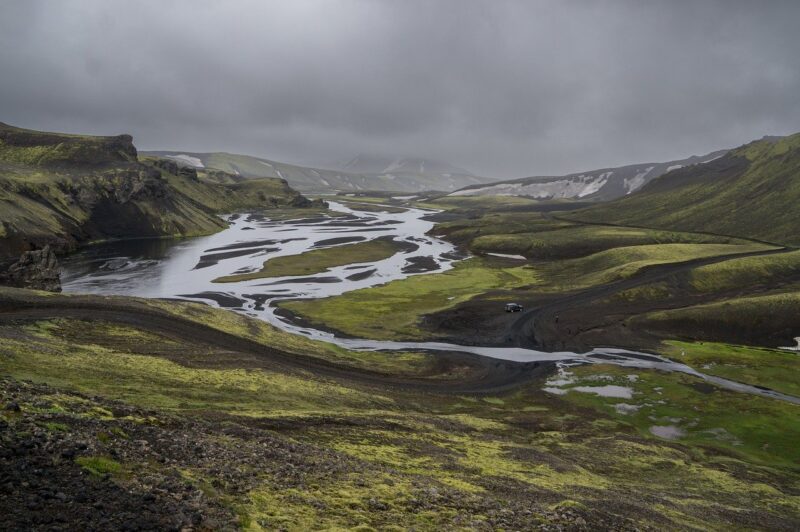How Rivers Influence Local Climate and Weather Patterns
November 14, 2024

Rivers have long captured the human imagination, not only as sources of water for drinking, irrigation, or navigation, but also for their critical role in influencing local climate and weather patterns. This article will delve into the multifaceted relationship between rivers and climate, examining how these natural waterways affect temperature, precipitation, humidity, and even the local flora and fauna.
1. Understanding the Basics: What is Climate?
Climate refers to the long-term patterns of temperature, humidity, wind, and precipitation in a particular region. It differs from weather, which describes short-term atmospheric conditions. While weather can change daily, climate is a product of many factors, including geographical location, elevation, and natural features such as rivers.
Rivers are dynamic, moving bodies of water that not only shape the land they traverse but also significantly influence how ecosystems function within their watersheds. The presence of a river can alter local climatic conditions, leading to implications for human activity, biodiversity, and agricultural practices.
2. The Climate-River Connection: How Rivers Affect Local Climate
Rivers can modify local climates in several ways. Here are some of the principal mechanisms:
2.1 Temperature Regulation
Rivers tend to have a moderating effect on temperature. They can help maintain a more stable temperature in their immediate vicinity. Water bodies heat up and cool down more slowly than land, preventing extreme temperature swings.
In summer, rivers bring cooler air, reducing heat and making adjacent lands more hospitable. Conversely, in winter, the warmth of the river can lead to slightly milder conditions in the surrounding areas. This temperature regulation affects not just the immediate ecosystem but also the microclimate, benefiting local agriculture.
2.2 Precipitation Patterns
Rivers significantly affect local precipitation by acting as sources of moisture in the atmosphere. The process known as evapotranspiration refers to the transfer of water from the soil and plants to the atmosphere. In regions with extensive river systems, the rate of evapotranspiration can increase humidity levels, leading to higher local precipitation.
For instance, the Amazon River Basin has a profound influence on the region’s rainforests, where the moisture generated contributes to the characteristic high rainfall. Similarly, rivers can create localized weather patterns that lead to phenomena such as fog or increased rainfall in protected valley areas.
3. Effects on Humidity Levels
The presence of rivers raises local humidity levels. The interaction of water with sunlight causes evaporation, introducing water vapor into the air. The changes in humidity can be particularly important for agriculture, as crops generally thrive in higher humidity levels. Moreover, increased humidity can mitigate the effects of drought, directly benefiting ecosystems and human populations that depend on adequate water supplies.
The local flora is also influenced; moisture-loving plants and trees are more likely to flourish in riverine areas, when compared to arid regions further away from water sources.
4. Impact on Local Weather Patterns
Rivers do not just change climates; they can also affect local weather events. The presence of a river may lead to localized precipitation; areas that are downriver may experience different weather conditions than areas further away.
4.1 Localized Storms
In certain cases, rivers can result in localized storm development. Warmer air from the water surface can rise, leading to cloud formation. This phenomenon is especially prevalent during summer when rivers may influence the development of storm clouds, impacting areas along their banks.
4.2 Snow and Ice Melting Patterns
In colder climates, rivers can also affect the timing and extent of snowmelt and ice formation. The warmth of river water, particularly during spring, may initiate earlier melting of snowpacks in the surrounding watershed area. This melting can have downstream effects, potentially leading to flooding and altering seasonal water availability for ecosystems.
5. Case Studies: Rivers and Their Climate Impact
To fully appreciate the connections between rivers and local climates, consider a few intriguing case studies:
5.1 The Mississippi River
The Mississippi River in the United States is not just a life-giver but also a vital climate regulator. The extensive floodplains along the river contribute to moisture retention in the atmosphere, increasing humidity and supporting agriculture in its basin. Furthermore, the river’s expansive waters help to buffer temperature extremes in regions nearby.
5.2 The Congo River
Unlike many temperate rivers, the Congo River has an immense impact on the tropical climate of Central Africa. The vast, slow-flowing waters create a microclimate that is conducive to dense jungles and rich biodiversity. The river’s influence extends to precipitation patterns that contribute significantly to the rainforest ecosystem’s health.
5.3 The Yangtze River
The Yangtze River in China also exhibits a strong relationship with its climate. Not only does it sustain millions of people through agriculture, but its flow has considerable effects on local weather. The subtropical climate surrounding the river provides a substantial amount of agricultural output, crucial for food security in the region.
6. Future Implications: Climate Change and Rivers
As climate change progresses, the dynamics between rivers and local climates are expected to evolve. Altered precipitation patterns, increased drought rates, and changing seasonal temperatures could all affect river systems. For example, increased evaporation rates could lead to reduced water levels in rivers, impacting the surrounding ecosystems, weather patterns, and agricultural productivity.
Conversely, heavier rainfall events could lead to unpredictable flooding, altering riverbanks and the ecosystems reliant on floodplain dynamics. Understanding these evolving relationships is critical for sustainable land-use planning and environmental management.
Conclusion
Rivers are not mere waterways—they are vital components of local climates that influence temperature, humidity, precipitation, and weather patterns. The interdependence of rivers and climate underscores the need for responsible environmental stewardship. As we grapple with emerging climate phenomena, it becomes increasingly clear that protecting our river systems is essential for maintaining climate stability and promoting healthy ecosystems, which will sustain us for generations to come.








